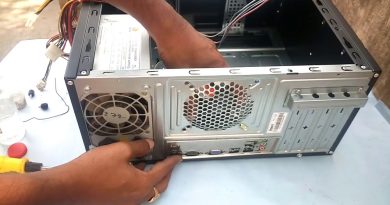4 Commands To Fix Your Windows Computer
Hello Viewers! This week with JamesOnIT we’ll be exploring a few different commands that could come in handy to fix problems you may have with your windows comp. Feel free to follow along as we dive in! And don’t forget to like and subscribe! Thanks for watching.
DISM /Online /Cleanup-Image /CheckHealth [2:15]: This command checks the health of the Windows image and reports any corruption found. It verifies the integrity of the system files without attempting repairs.
DISM /Online /Cleanup-Image /ScanHealth [3:30]: This command scans the Windows image for corruption and attempts to repair any issues found. It’s a more thorough scan compared to CheckHealth.
DISM /Online /Cleanup-Image /RestoreHealth [4:20]: This command repairs any corruption found in the Windows image. It uses the Windows Update servers to download and replace any corrupted files.
SFC /scannow [5:50]: This command scans the system for corrupted system files and repairs them if possible. It focuses on critical system files and doesn’t necessarily scan everything like DISM.
https://learn.microsoft.com/en-us/windows-hardware/manufacture/desktop/repair-a-windows-image
#HomeLab #DIYTech #TechEnthusiast #WindowsEvaluation #TechPlayground
Music by: Bensound.com/free-music-for-videos
License code: 42TMY7TVNWKPSVAY
how to repair windows 7




Will these work with Win 7 Pro?
Thank you, I think I followed your instructions. Result: PS C:Windowssystem32> dism /online /cleanup-image /checkhealth
Deployment Image Servicing and Management tool
Version: 10.0.19041.3636
Image Version: 10.0.19045.4355
No component store corruption detected.
The operation completed successfully.
PS C:Windowssystem32> dism /online /cleanup-image /scanhealth
Deployment Image Servicing and Management tool
Version: 10.0.19041.3636
Image Version: 10.0.19045.4355
[==========================100.0%==========================] No component store corruption detected.
The operation completed successfully.
PS C:Windowssystem32> sfc /scannow
Beginning system scan. This process will take some time.
Beginning verification phase of system scan.
Verification 100% complete.
Windows Resource Protection found corrupt files and successfully repaired them.
For online repairs, details are included in the CBS log file located at
windirLogsCBSCBS.log. For example C:WindowsLogsCBSCBS.log. For offline
repairs, details are included in the log file provided by the /OFFLOGFILE flag.
Good info for the most part, but the /online option tells it to check the currently running Windows. It doesn’t tell it to go online to check Microsoft.
I run these weekly from Command Promp (admin) on Windows 10. I go directly to the restorehealth option, to save time.
How often do you have to do DISM?
Here are the commands and their functions for each command line:
DISM /Online /Cleanup-Image /CheckHealth [2:15]: This command checks the health of the Windows image and reports any corruption found. It verifies the integrity of the system files without attempting repairs.
DISM /Online /Cleanup-Image /ScanHealth [3:30]: This command scans the Windows image for corruption and attempts to repair any issues found. It's a more thorough scan compared to CheckHealth.
DISM /Online /Cleanup-Image /RestoreHealth [4:20]: This command repairs any corruption found in the Windows image. It uses the Windows Update servers to download and replace any corrupted files.
SFC /scannow [5:50]: This command scans the system for corrupted system files and repairs them if possible. It focuses on critical system files and doesn't necessarily scan everything like DISM.
Will these commands work the same on windows 10?